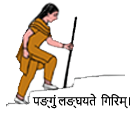Diet and do-don'ts (pathya = appropriate diet and lifestyle that helps control a disease) have gained importance in our country since the Mahabharat and Ramayan periods. Food keeps alive our life journey; hence it is not unnatural for people to think about a relationship between diet and disease. The importance of pathya is rooted deep in the minds of people over hundreds of years. Scientists worldwide are looking for a correlation between diet and arthritis over the last eight decades. Although over half of the arthritis patients follow one or another form of pathya, there is no sufficient evidence for some particular diet or dietetic item triggering, flaring, or curing arthritis. A magic cure is certainly impossible with the help of diet therapy.
Diet and food supplements are advertised in various books, periodicals, and on the internet. There is no scientific proof in favor of usually expensive diet supplements. Patients fall prey to these advertisements and buy diet supplements that are usually more costly than the real disease-modifying drugs. Companies rob these patients by paying hefty commissions to their sales personnel. Inflammatory arthritis, by its very nature, is a disease of relapse and remissions. Remission in a particular patient on starting with a specific therapy is advertised as the success of that particular therapy. Lay people do not know about checking the validity of tall claims in these advertisements.
The list of pathya is sometimes so long that there remains nothing to eat. Some practitioners advise fasting, which is not advocated even in Ayurveda. Vagbhata says that an inadequate diet reduces strength, nourishment, and luster and causes all Vata-diseases ( Sutra Sthan 8/3). Some people advise a liquid diet only. These measures may reduce pain to some extent but cannot shorten the duration of morning stiffness, control the disease, or improve functional status. Patients start feeling better after 4-5 days of fasting. Fasting can lead to severe fatigue, weakness, and weight loss. Switching back to a regular diet brings the disease to its original status once again. Fasting, liquid diet, or other pathya is challenging to maintain indefinitely. Such diets have an overt risk of malnutrition.
It must be understood that arthritis is of more than 100 types which are classified into two major classes-degenerative and inflammatory. It means that the pathya in these two arthritis classes is not the same because of an altogether different disease process. It is usually advisable to change any diet step by step. First, one should identify a few dietary items that increase pain or stiffness. Once identified, such things may be avoided for a month or so. The reappearance of symptoms on the reintroduction of the suspected item indicates a sort of allergy. Such food items should never be consumed again.
